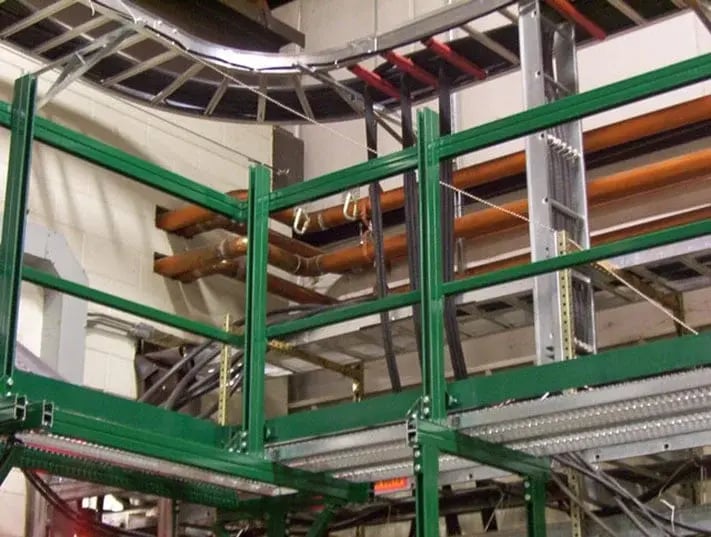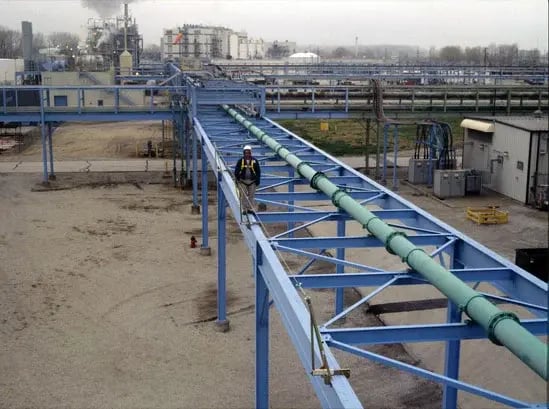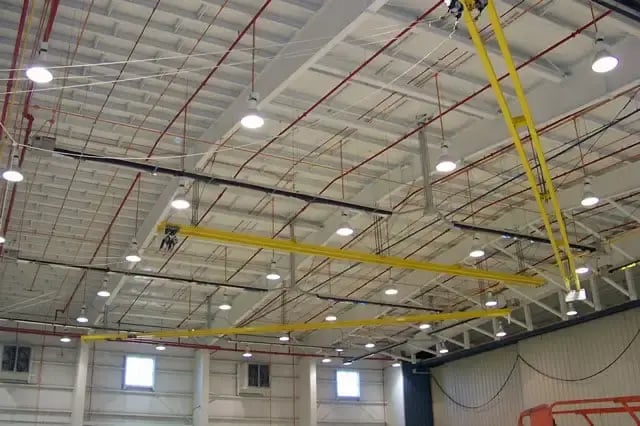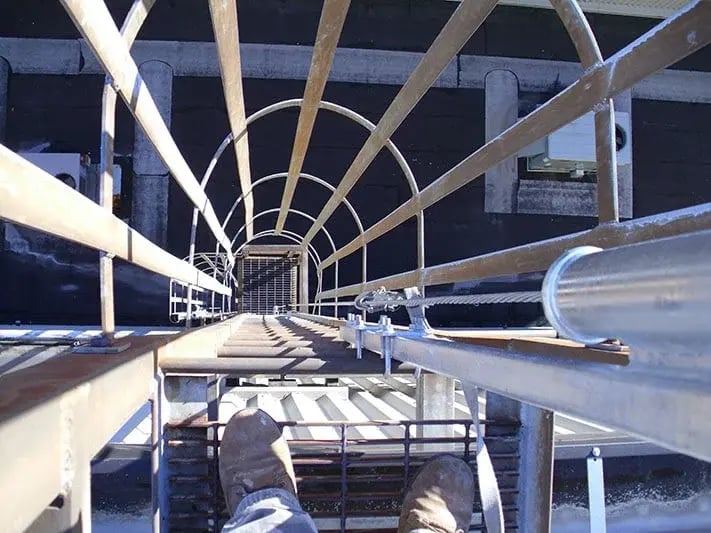Chemical and Petrochemical
The presence of highly caustic, corrosive, and volatile materials such as chlorine and acid found in chemical and petrochemical plants requires extensive maintenance and repair of pipe rack systems, clarifying and settling tanks, and other equipment which often exposes employees to fall hazards. Ensuring OSHA compliance and worker safety requires a comprehensive fall prevention strategy, which includes the proper mix of fall protection equipment, a descent and rescue plan, personnel training, and partnering with a fall protection company that appreciates the unique nature of the potential fall hazards associated with the chemical and petrochemical industries.

Fall Protection Solutions
Design Considerations
Because chemical and petrochemical plants process corrosive, caustic, and sometimes potentially explosive materials, material selection is a key consideration in system design. Chemical and petrochemical fall protection and fall arrest systems are typically fabricated using galvanized rather than powder coated or painted materials to ensure chemical resistance. Non-sparking synthetic cable systems are often specified in chemical and petrochemical applications to minimize the risk of accidental sparking and explosions.
Prolonged exposure to materials found in these plants may pose significant health and safety risks to maintenance personnel, so ease of use is another important factor when evaluating system design. The finished fall arrest system must be easy to use, fall protection systems must not be cumbersome, and personnel must be able to complete their assigned tasks and leave the work area quickly.
Although pipe rack applications often lend themselves to a horizontal lifeline systems, there are a number of design considerations which must be considered to ensure the safety of your employees. Because most pipe rack systems are outside, it is important to specify materials that can withstand prolonged exposure to the elements. Pipe rack horizontal lifelines are typically constructed from 316 stainless steel components to offer corrosion resistance and component longevity. In addition, because the top tier of a pipe rack system lacks overhead structure to attach a horizontal lifeline for fall arrest, support beams must also be fabricated and installed. Regardless of level, the horizontal lifeline system design must arrest falls before workers make contact with pipes, support beams, or other structures below the work area.
Many pipe rack systems also have areas requiring infrequent inspection or maintenance that make installation of a permanent horizontal lifeline for fall arrest impractical or economically unfeasible. In these areas, choker cable tie off systems may be an acceptable, cost-effective alternative to a permanent HLL.
Special care must also be taken to account for load and deflection rates which are determined by a number of factors, including pre-tension of the cable, length of the area spanned, and the number of workers connected to the system.
Our years of experience in the chemical and petrochemical industries, installation expertise, and awareness of your unique access will help us implement a turnkey fall protection system that keeps your employees safe and your facility in compliance with all OSHA regulations.

b-1.jpg?width=1368&height=1340&name=Rail%20(175)b-1.jpg)






-1.webp?width=500&height=375&name=Rail%20(226)-1.webp)





